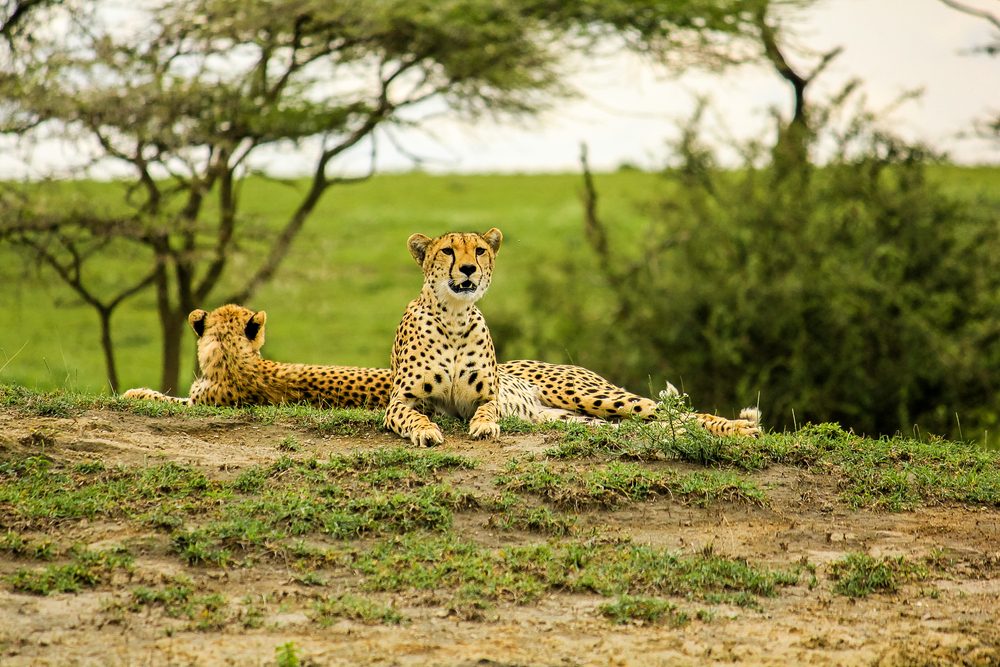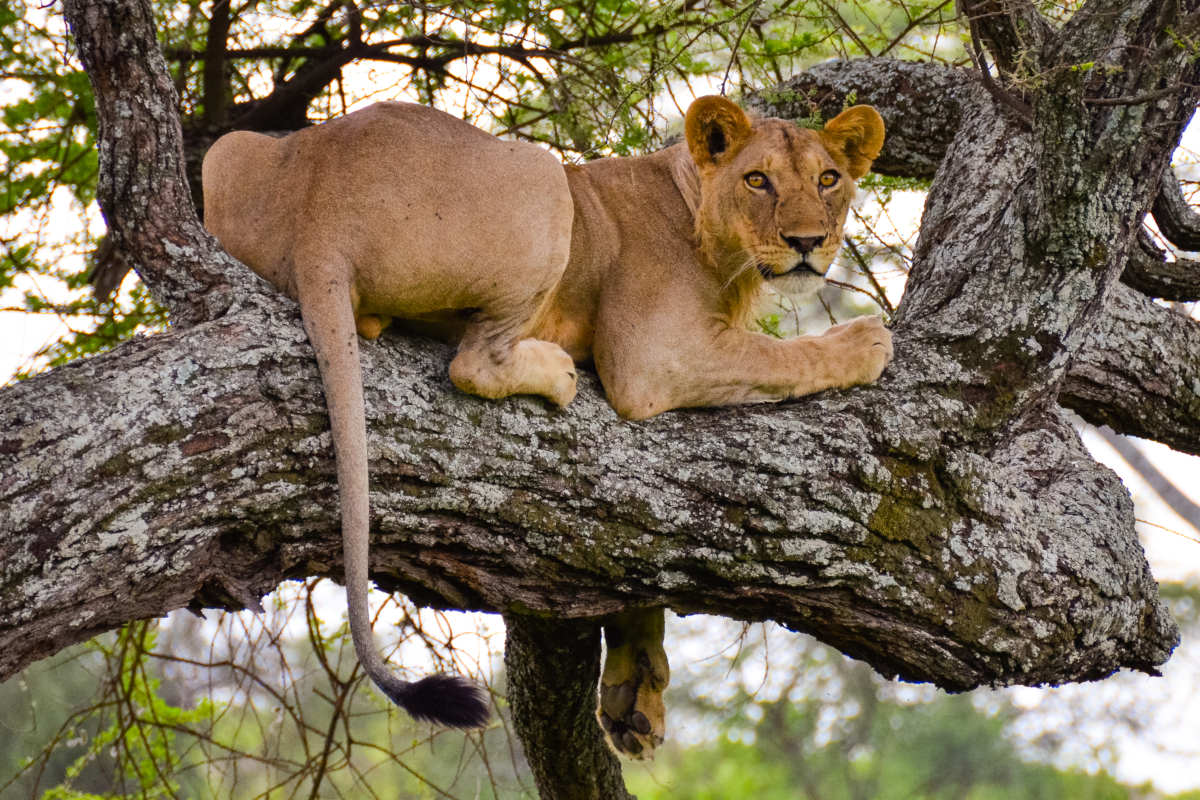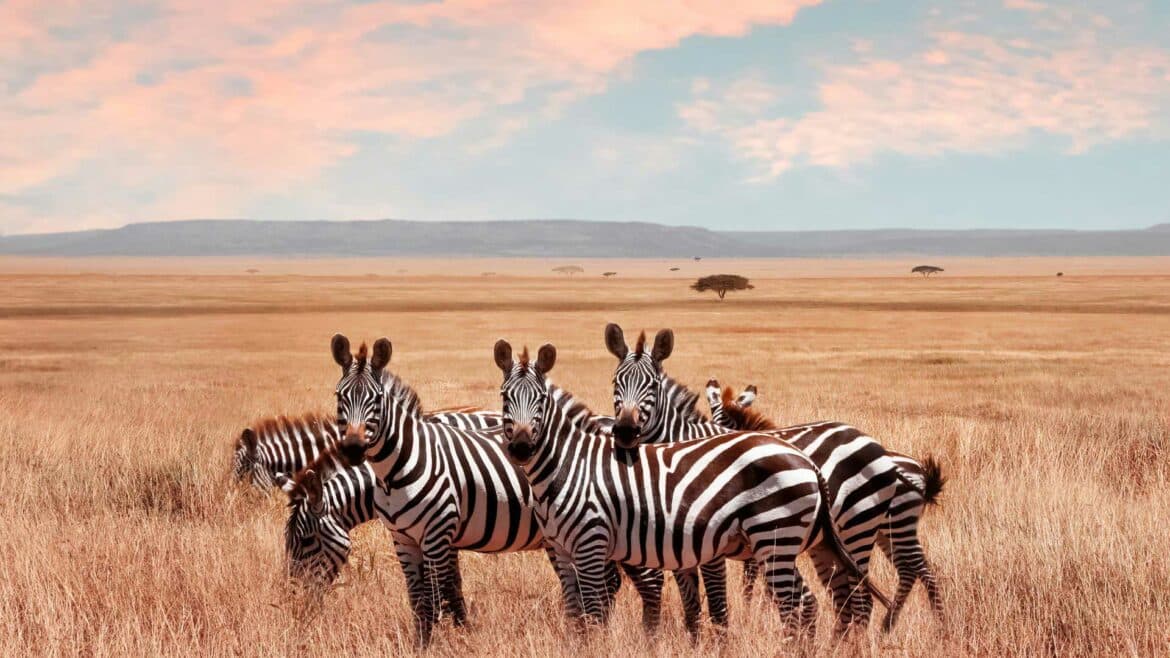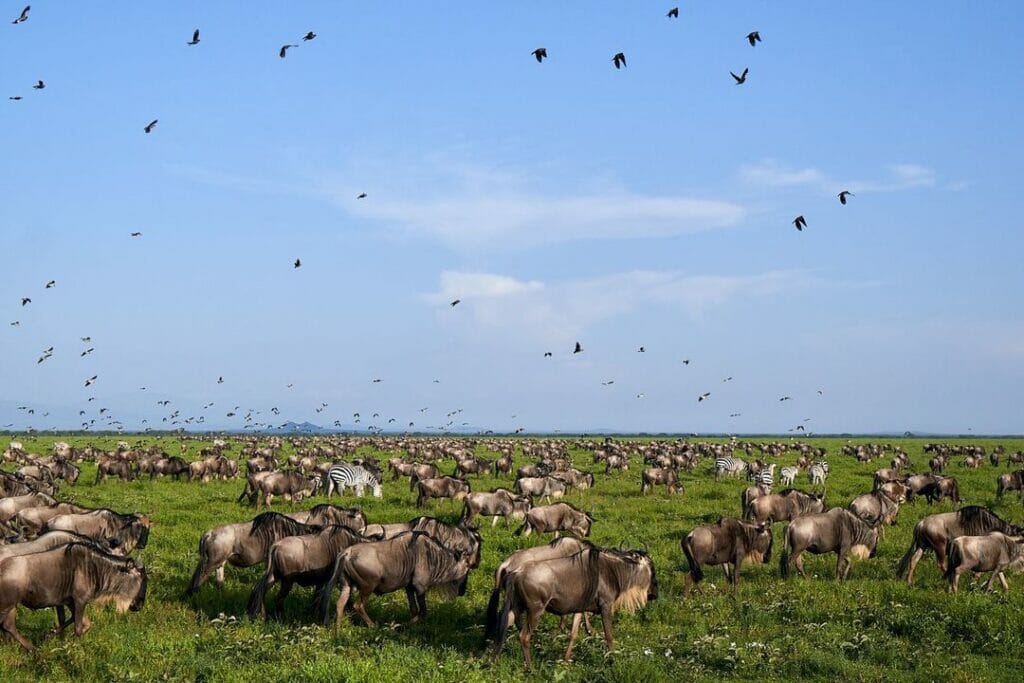Serengeti National Park

Serengeti National Park
Overview
Serengeti National Park, Tanzania's oldest and most iconic safari destination, is famed for its vast savannahs, teeming wildlife, and the annual Great Migration. This UNESCO World Heritage Site covers nearly 15,000 square kilometers (5,700 square miles) and is renowned as one of the best places in Africa to see large predator-prey interactions, open plains, and breathtaking landscapes. Visitors come from around the world to witness the spectacle of millions of wildebeest and zebras moving through the Serengeti in search of fresh grazing, a journey that includes encounters with Africa’s Big Five.
Wildlife
Serengeti National Park is home to one of the most diverse and dense concentrations of wildlife on Earth. The park boasts all members of the Big Five—lion, leopard, buffalo, elephant, and rhinoceros. Predators such as cheetahs, hyenas, and jackals are also common sights here, especially during the migration season. Besides the famous herds of wildebeest and zebra, gazelles, impalas, and giraffes populate the plains, providing plenty of hunting opportunities for the park’s apex predators.
Birds
With over 500 bird species recorded, Serengeti National Park is a birdwatcher's haven. Common species include ostriches, secretary birds, kori bustards, and martial eagles. Seasonal water bodies attract flamingos, pelicans, and crowned cranes, while rare finds like the Fischer’s lovebird and grey-breasted spurfowl make Serengeti a must-visit for avid birders. Birdwatching is especially rewarding from November to April, when migratory birds arrive.
Best Time To Visit
The Serengeti offers incredible experiences year-round, but the best times to visit depend on the visitor’s interests. The dry season, from June to October, provides excellent game viewing, as animals congregate around water sources. For those wanting to witness the Great Migration, plan for June and July to see river crossings at Grumeti and Mara rivers, or between January and March to witness the calving season in the southern plains.
Weather & Climate
Serengeti’s climate is tropical and influenced by altitude, with mild to warm temperatures throughout the year. Daytime temperatures typically range from 20°C to 30°C (68°F to 86°F). The short rains occur in November and December, while the long rains fall from March to May. During the rainy season, the park's scenery is lush and green, while the dry season is drier, making wildlife spotting easier.
Getting There
The Serengeti can be accessed by road or air. Many visitors fly into Kilimanjaro International Airport (near Arusha) and then take a chartered flight to one of the park’s airstrips. By road, the park is accessible from Arusha, though it requires a 6-7 hour drive. Many safari operators offer guided tours that include Serengeti as part of the Northern Circuit, including nearby attractions like Ngorongoro Crater and Lake Manyara.




